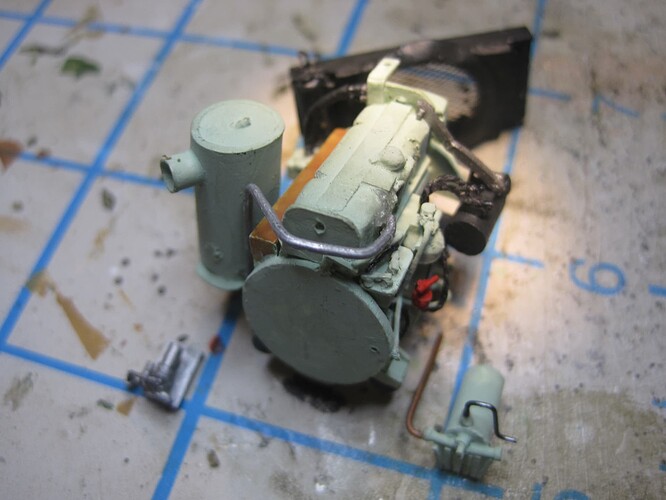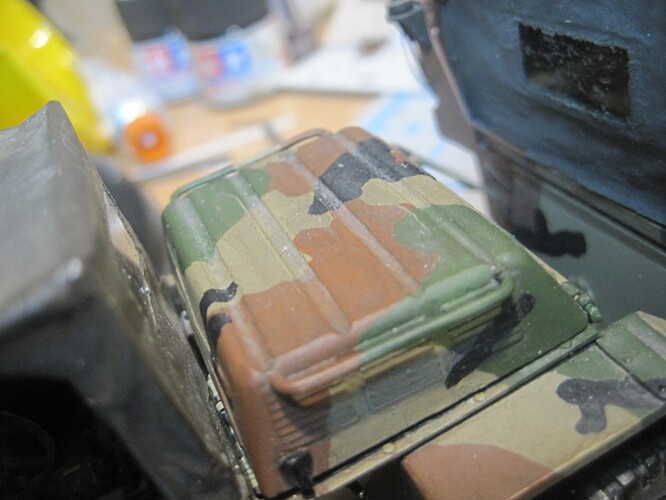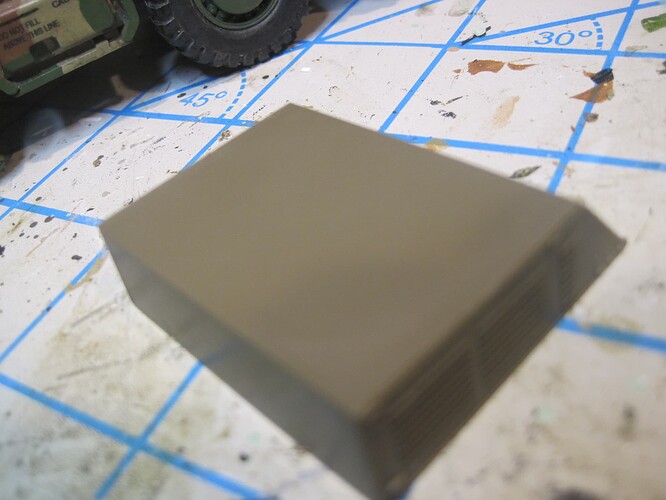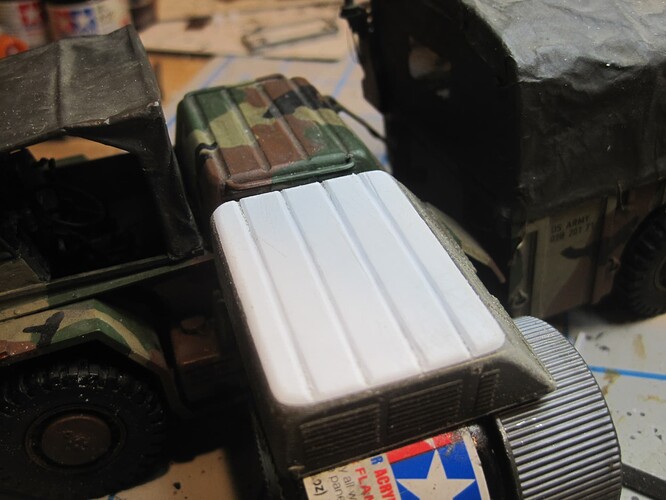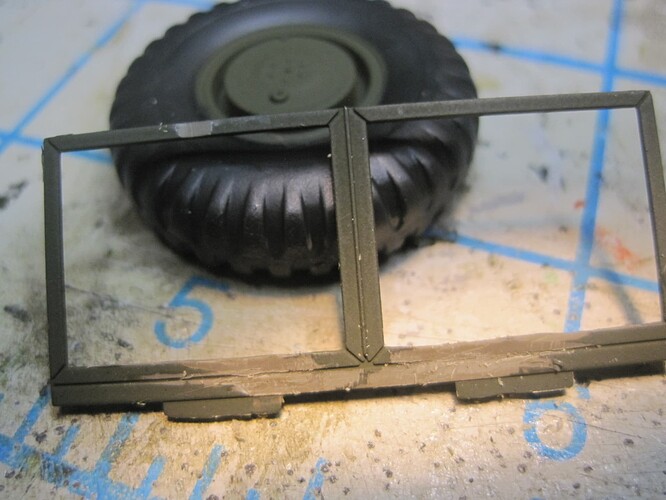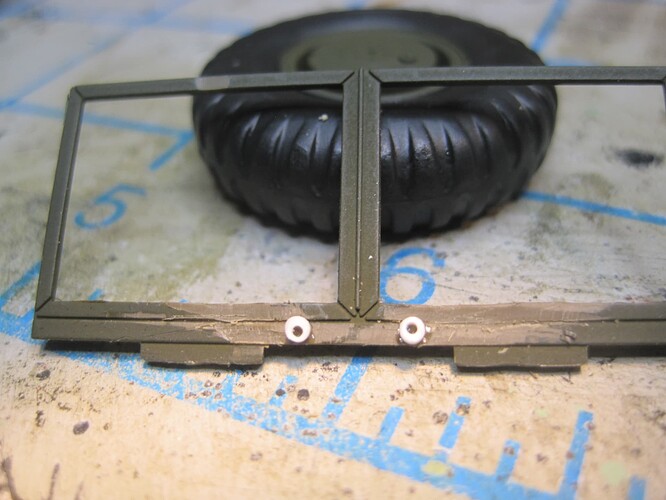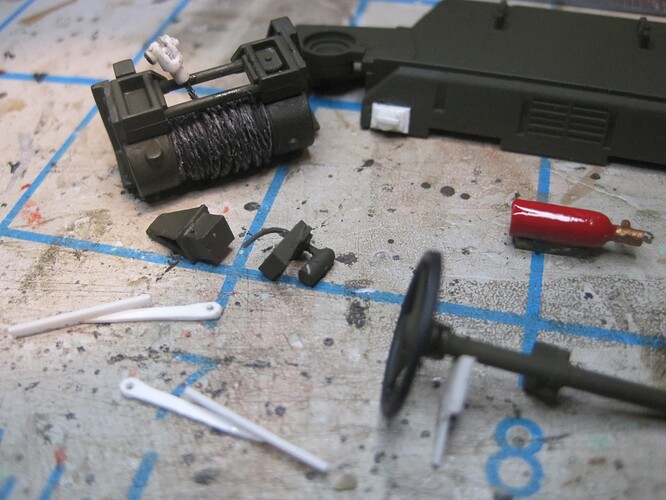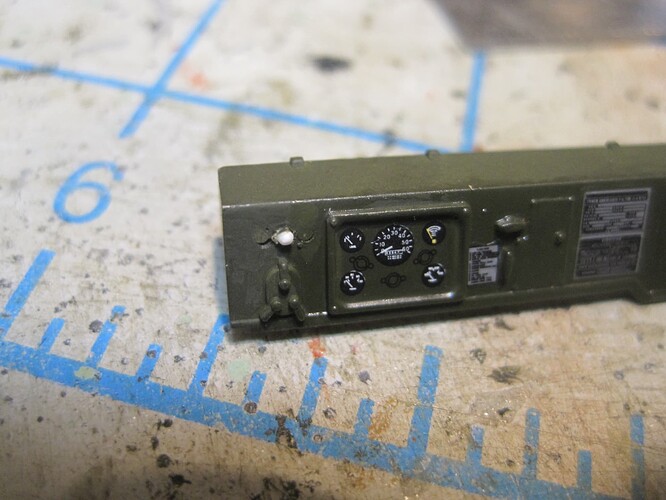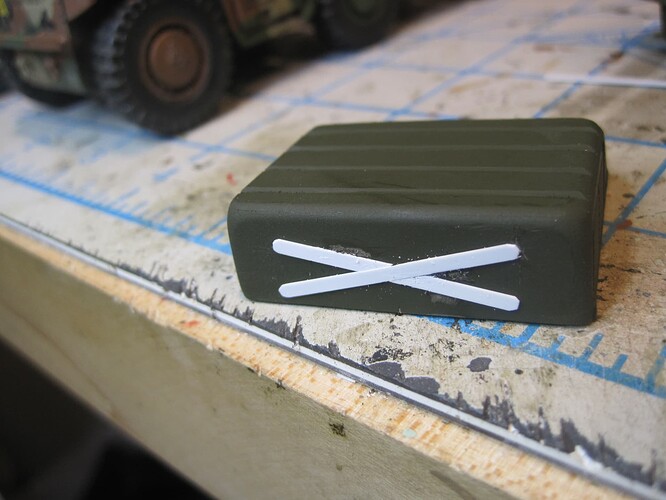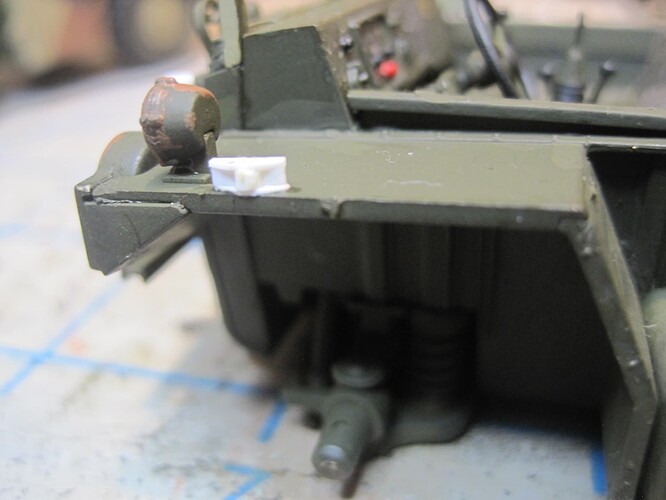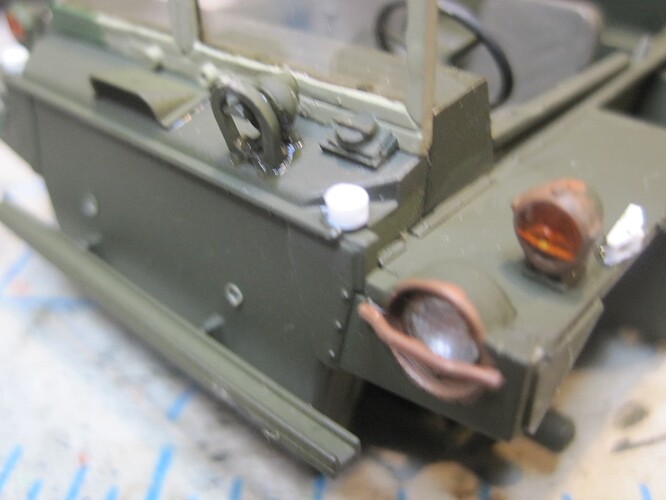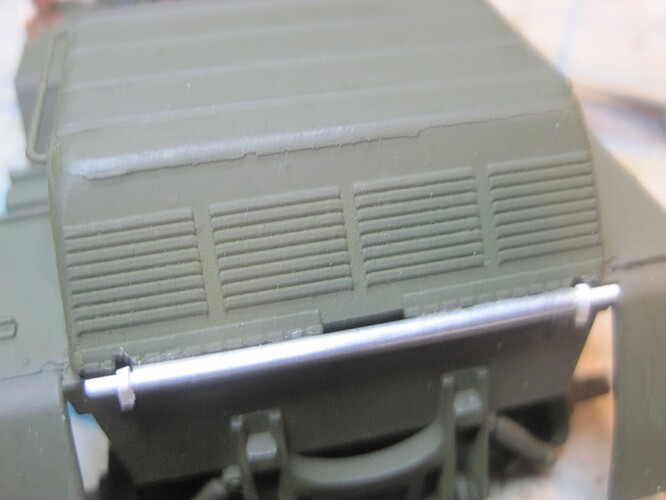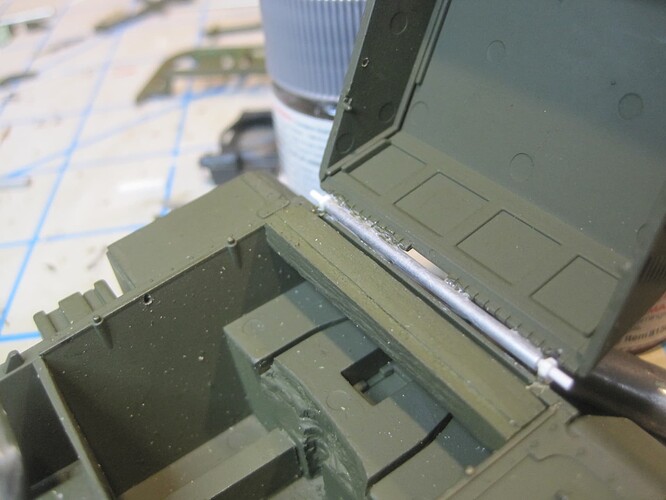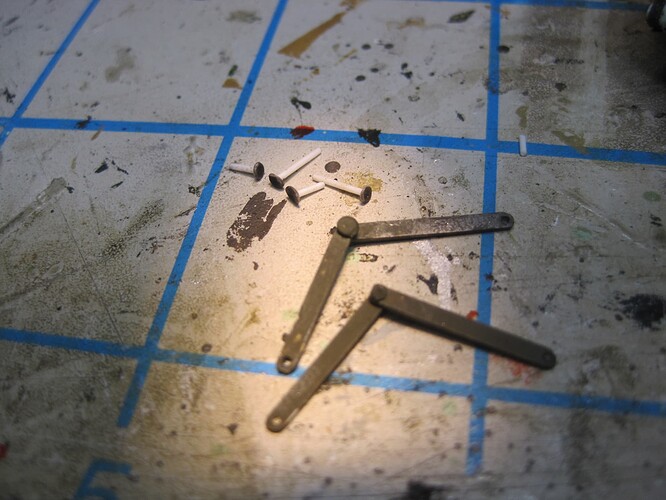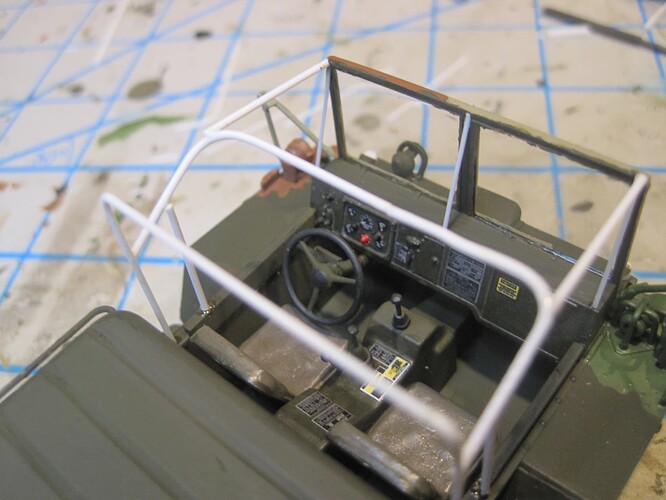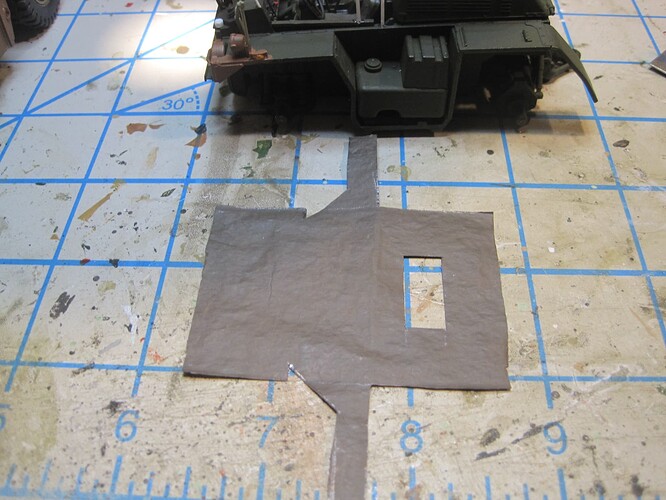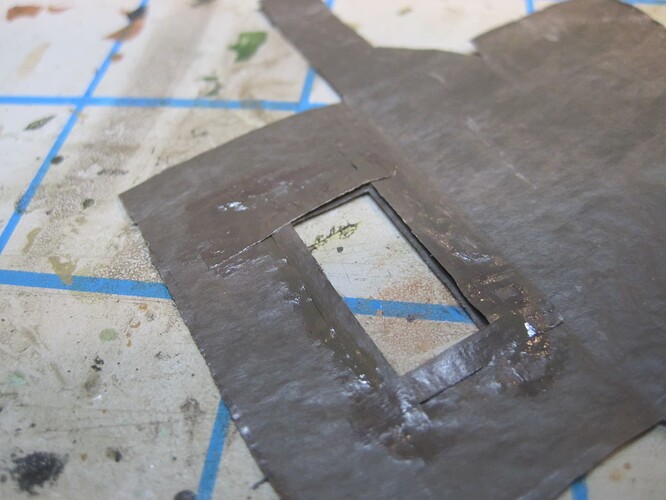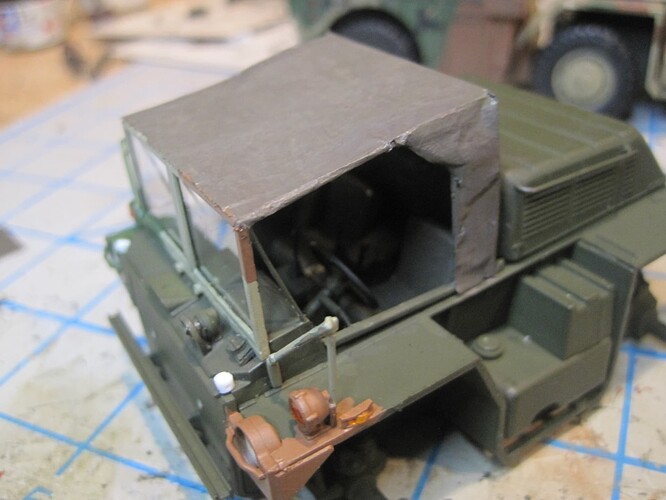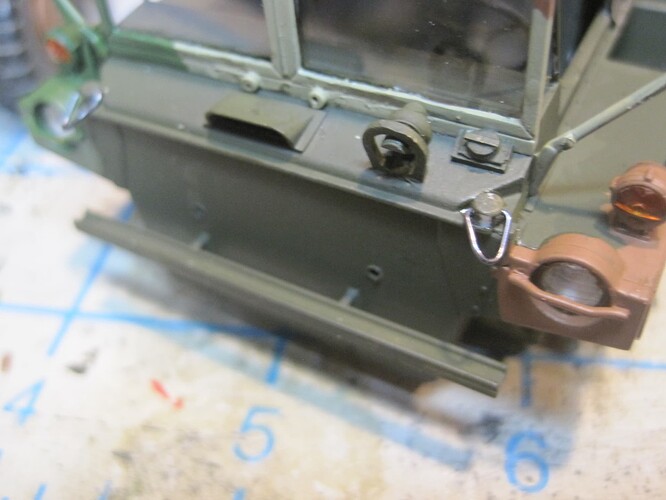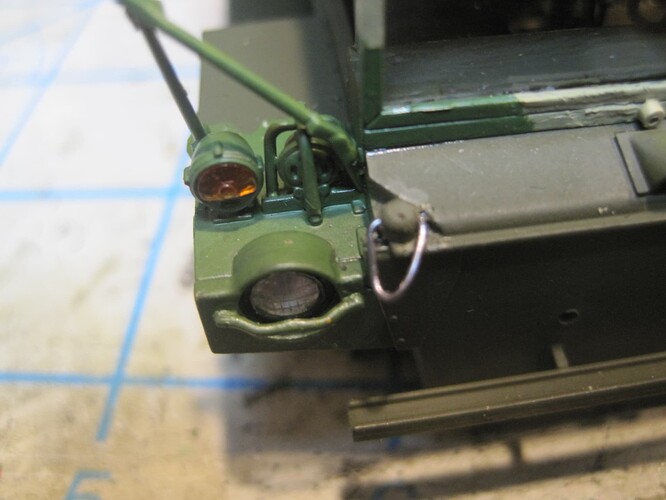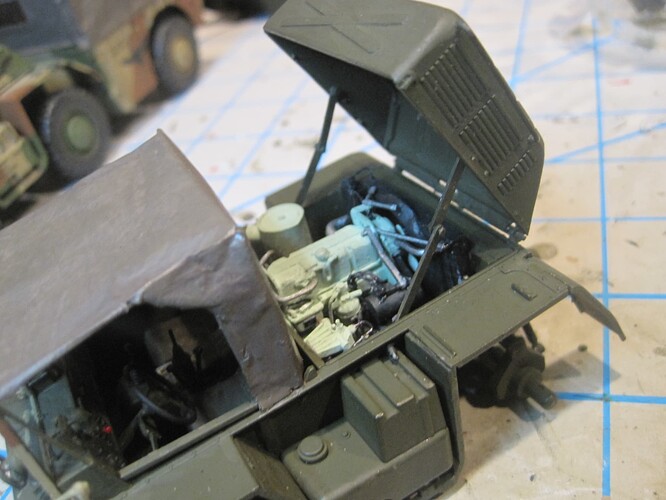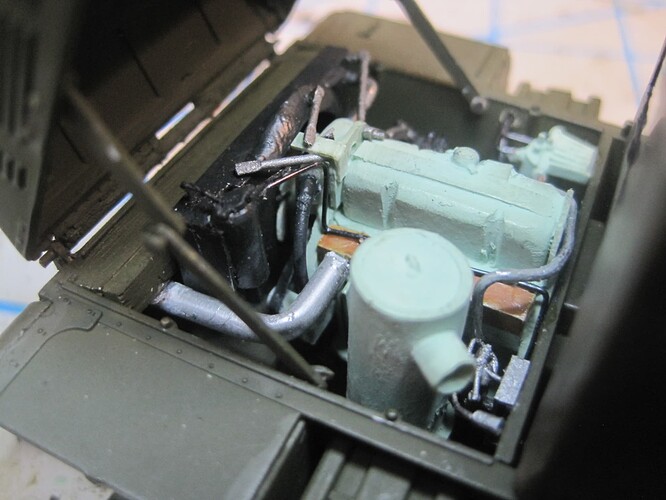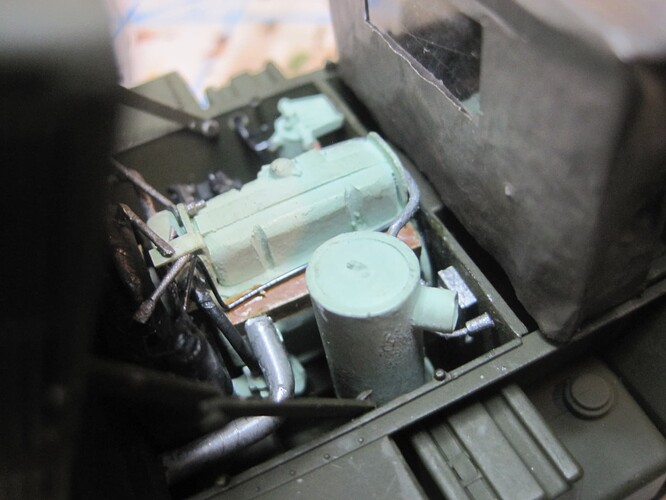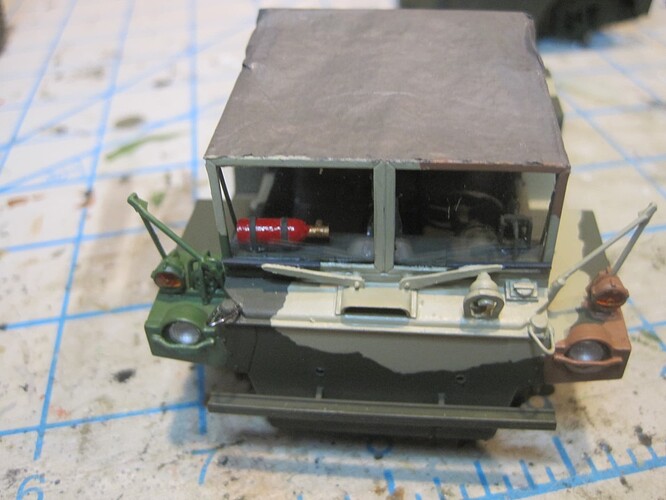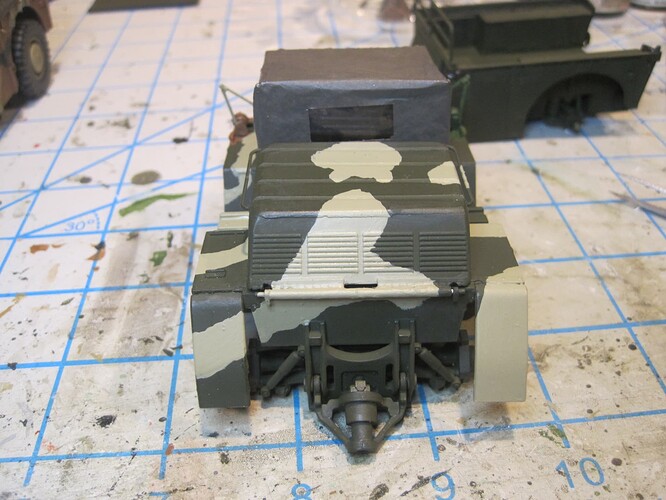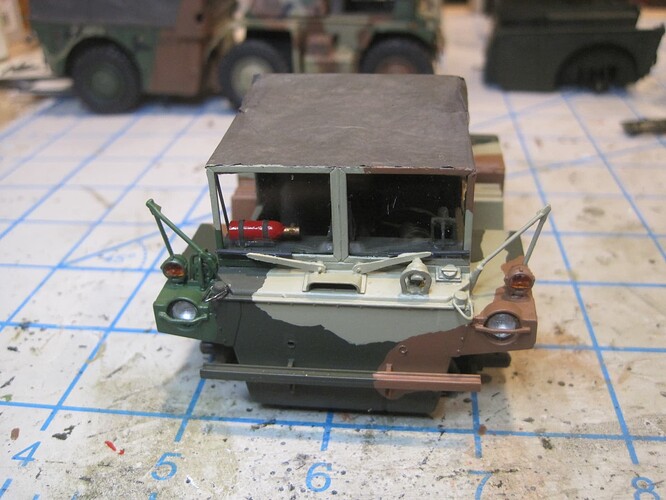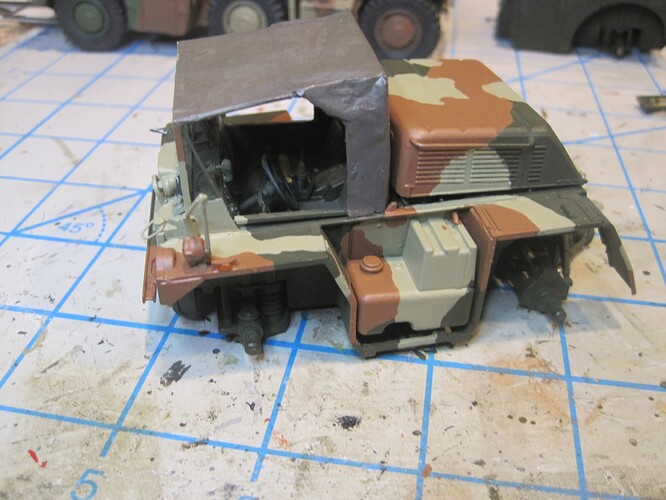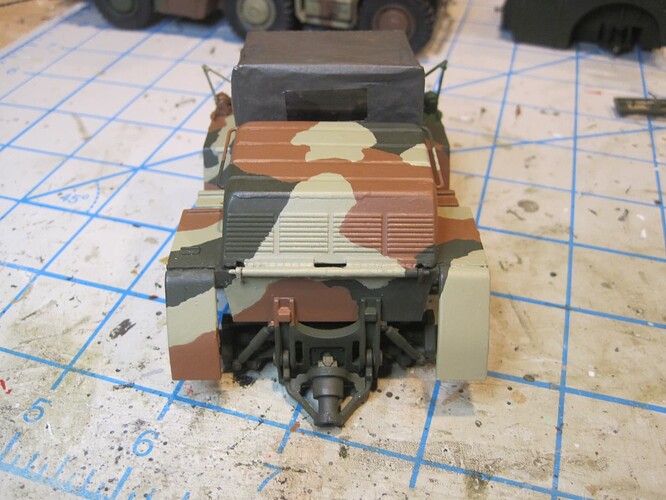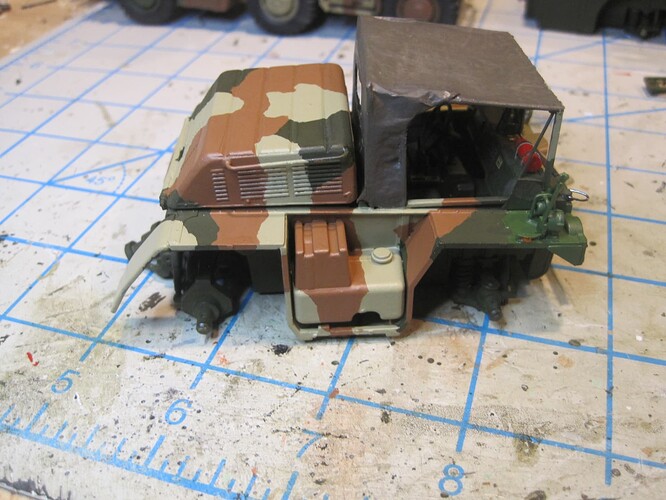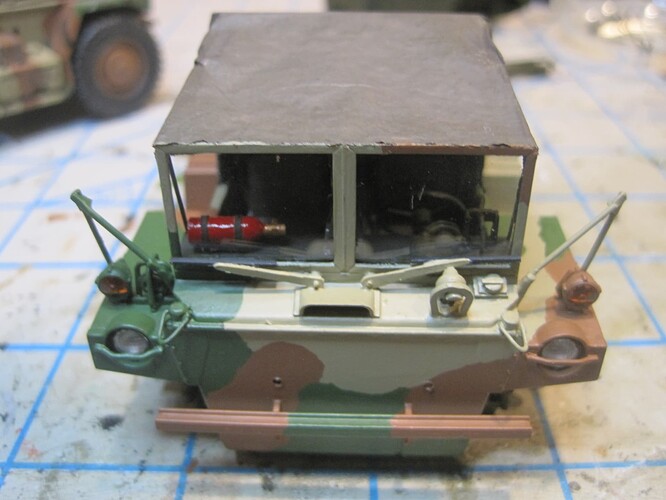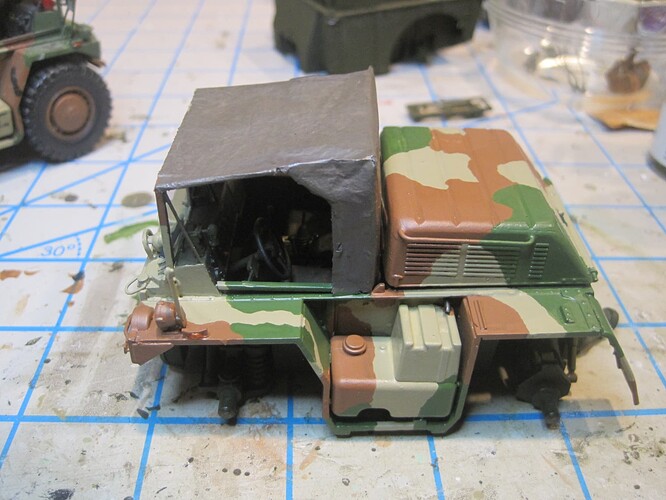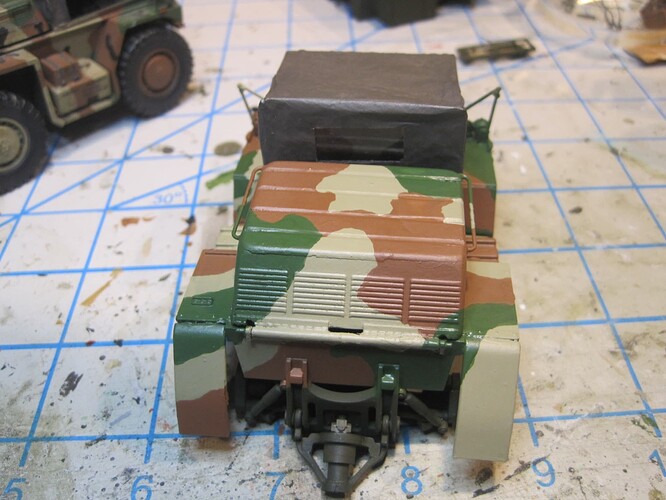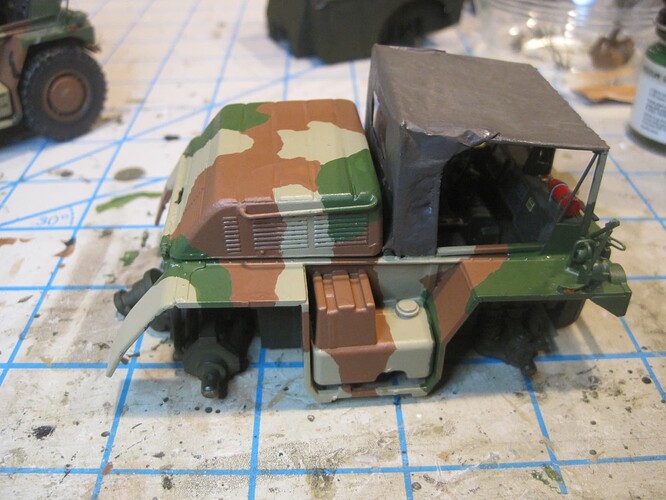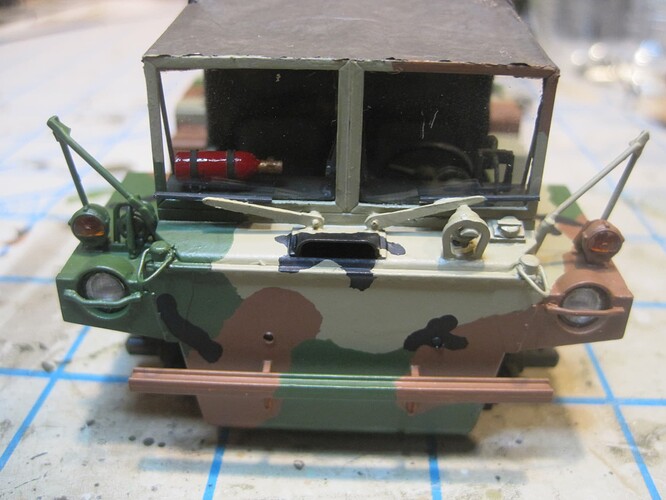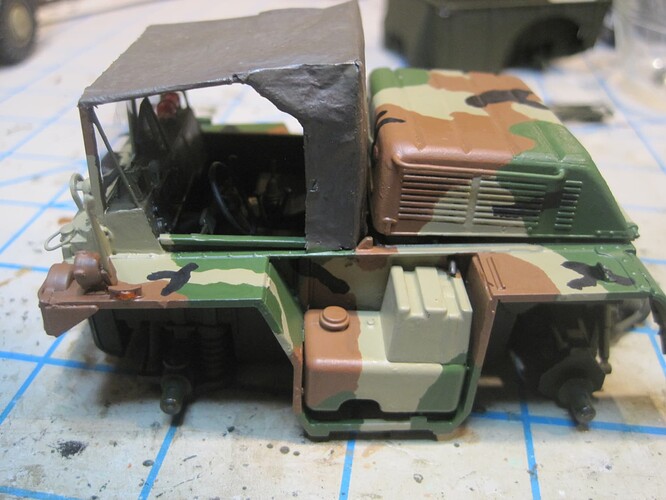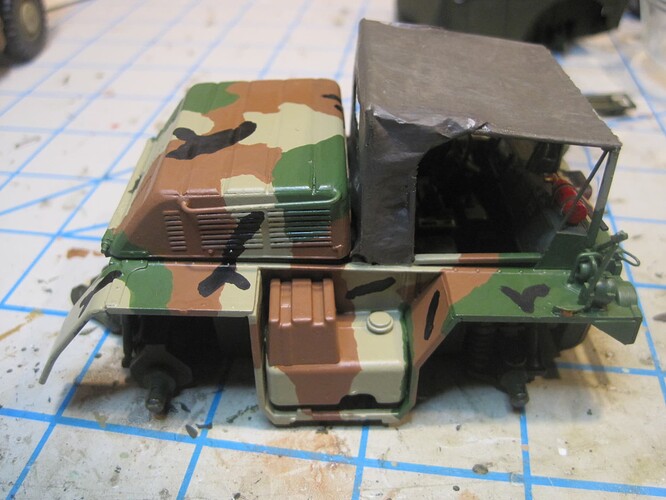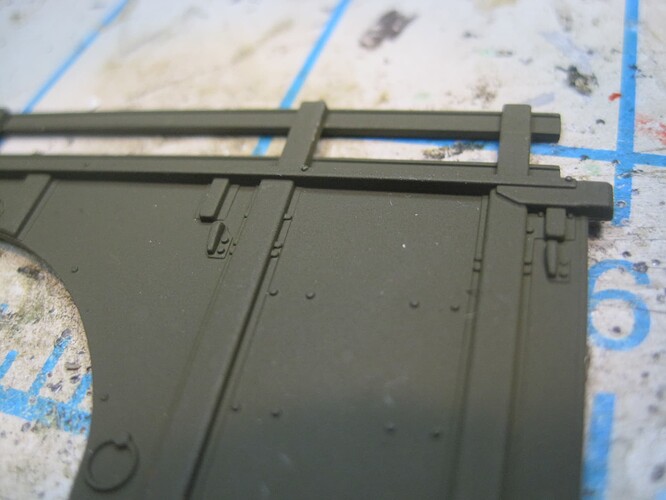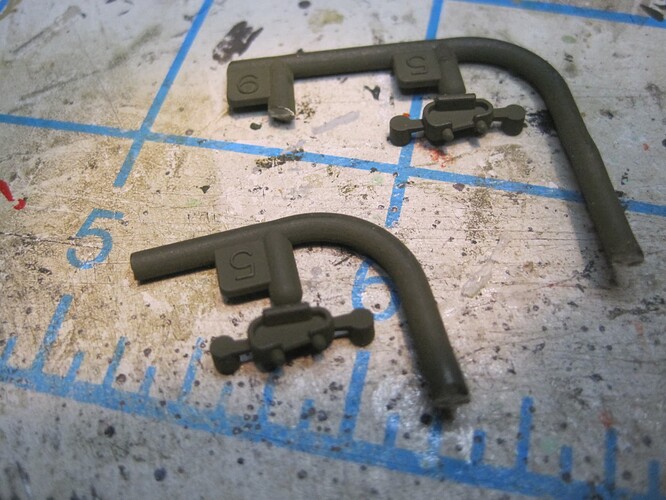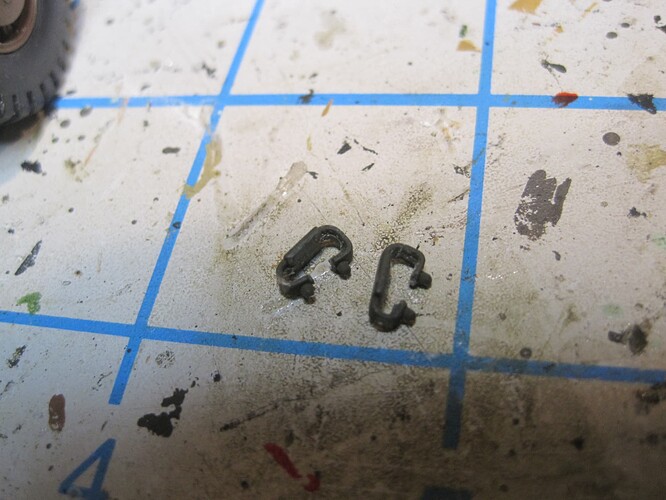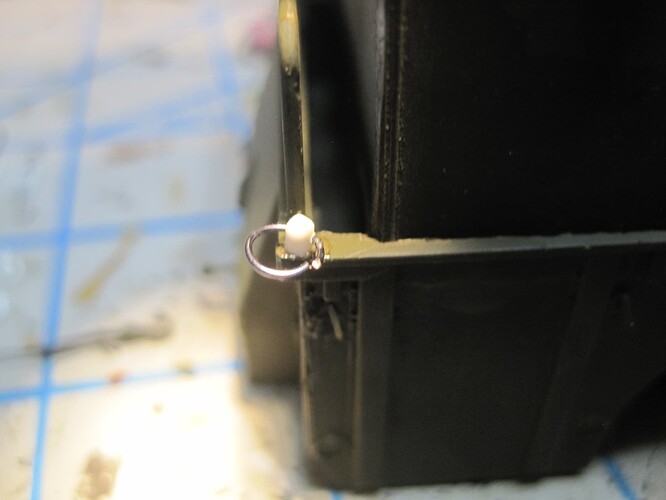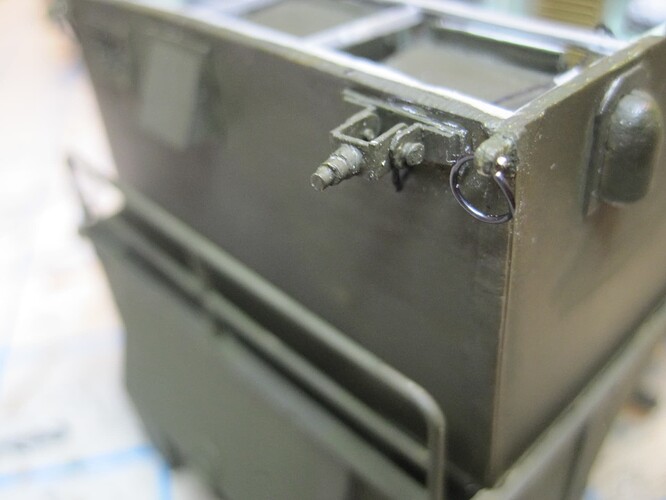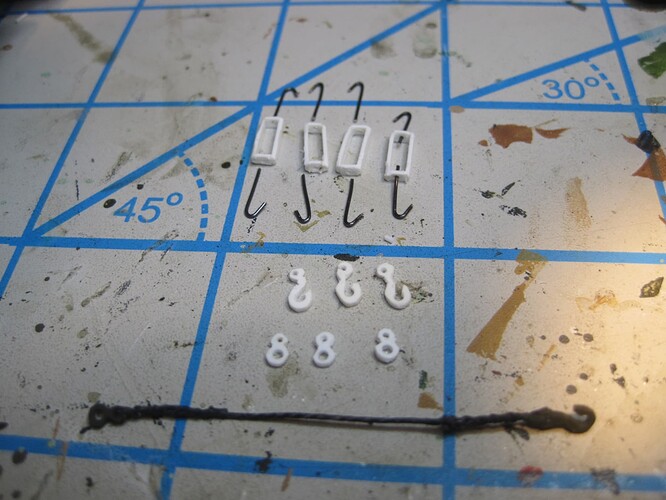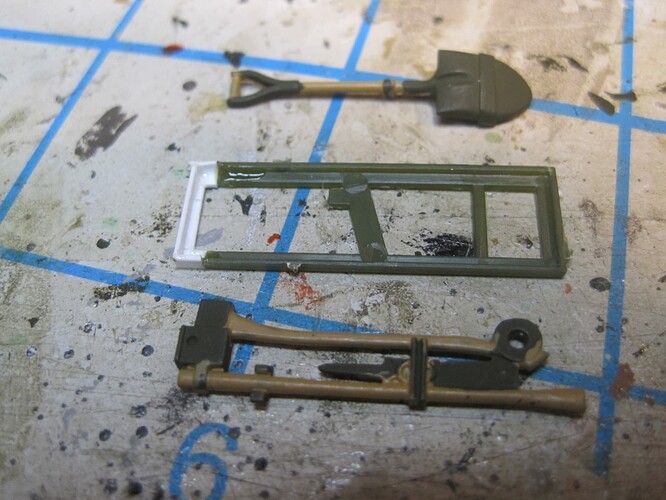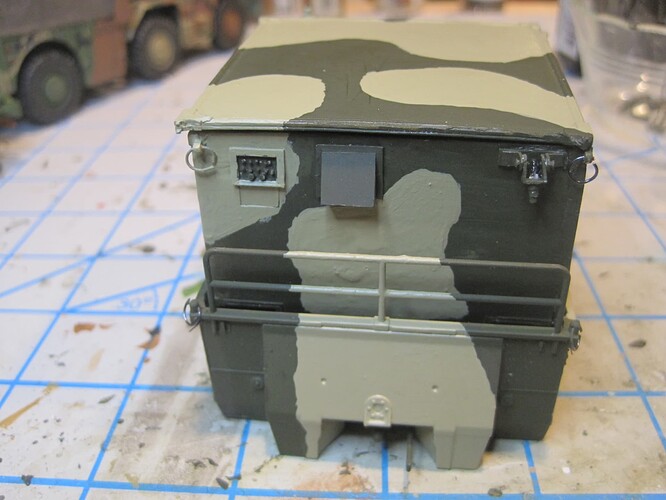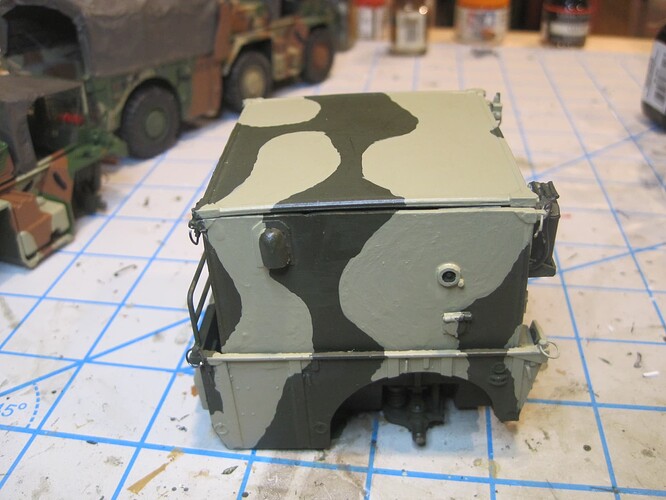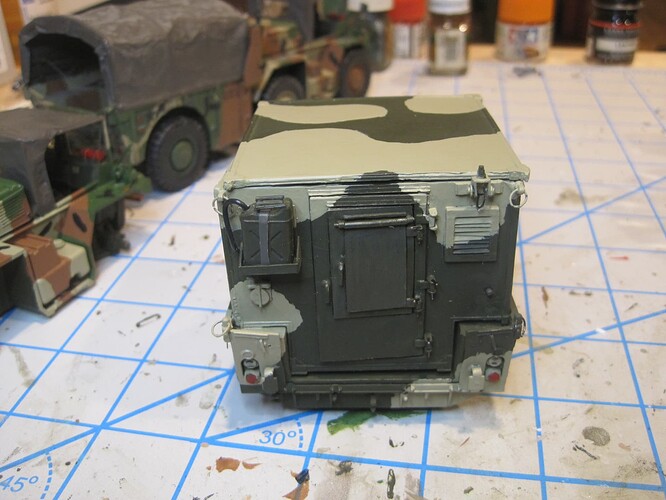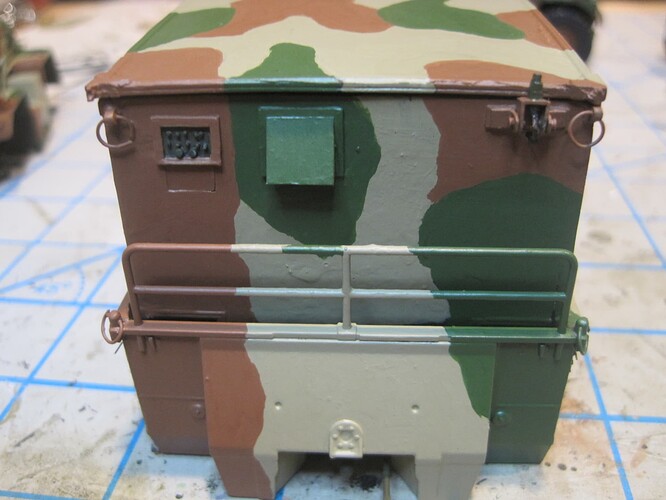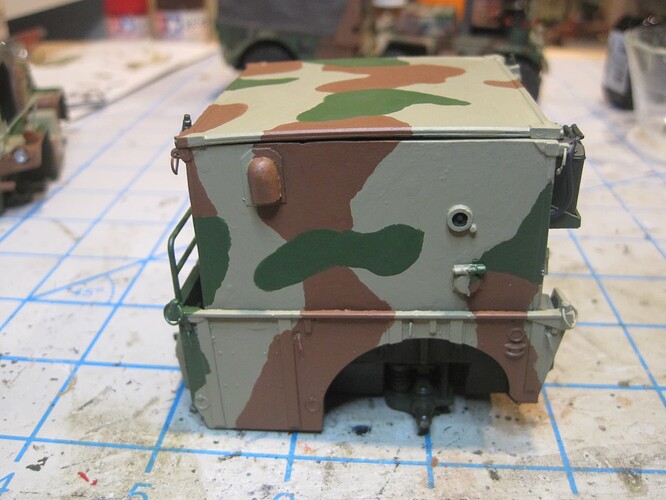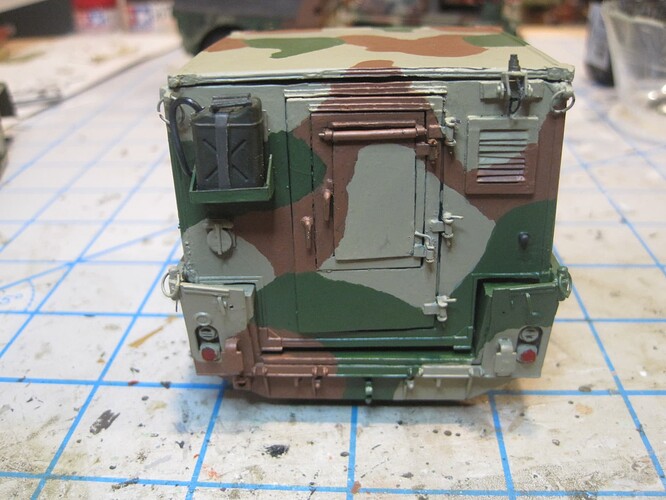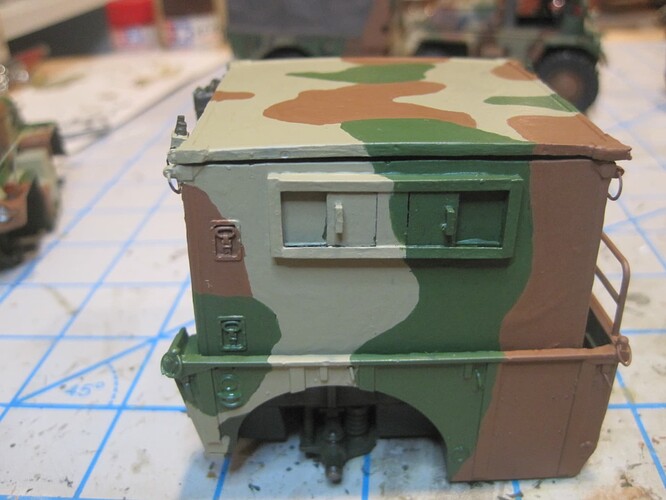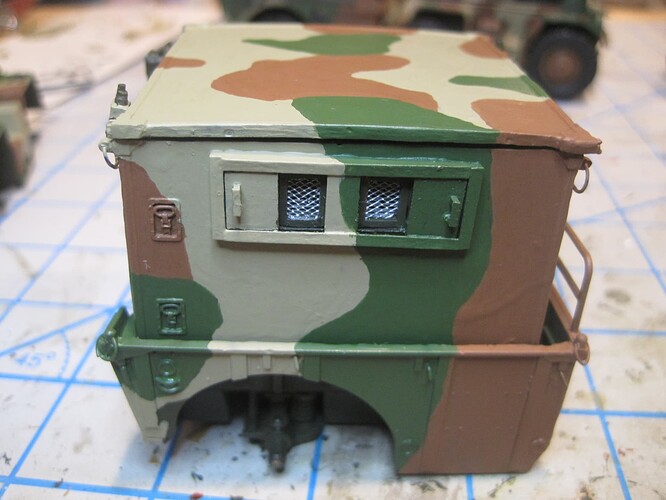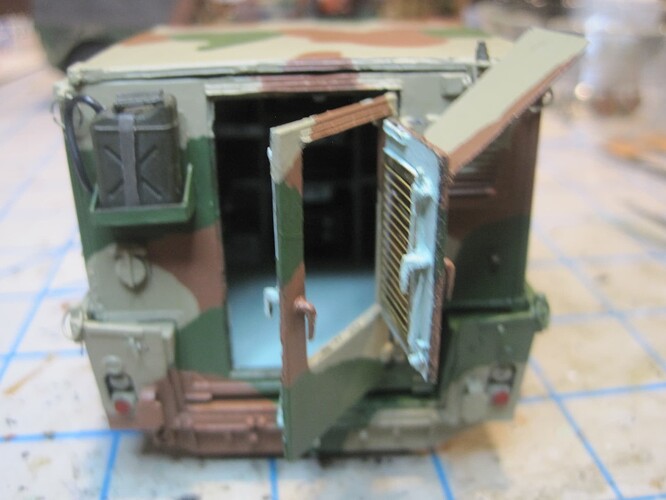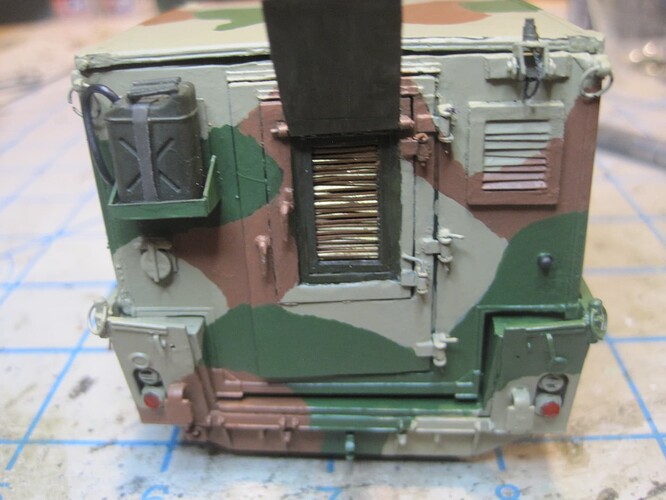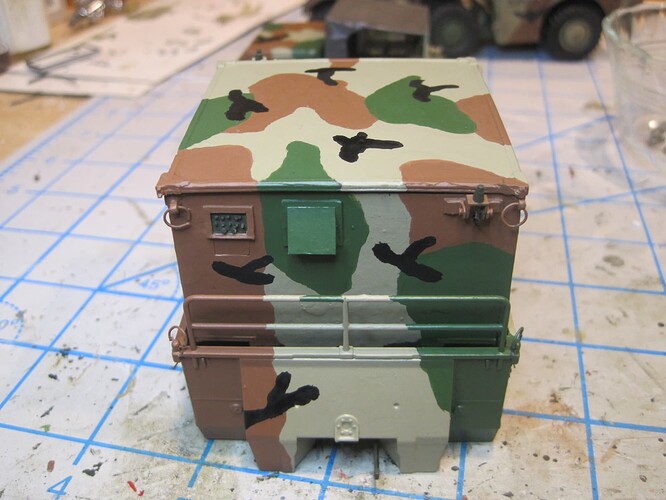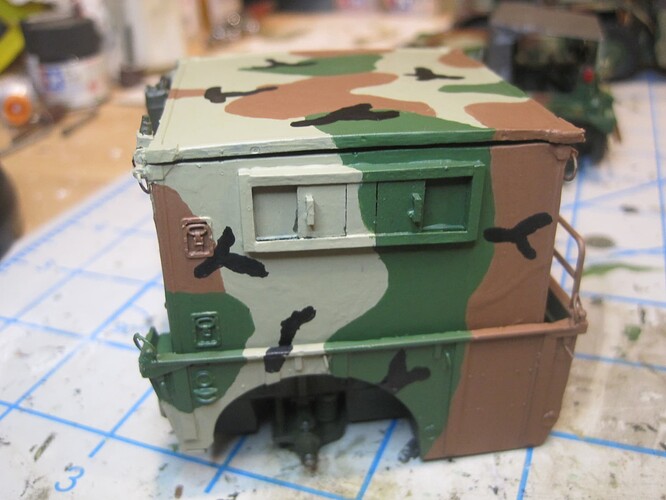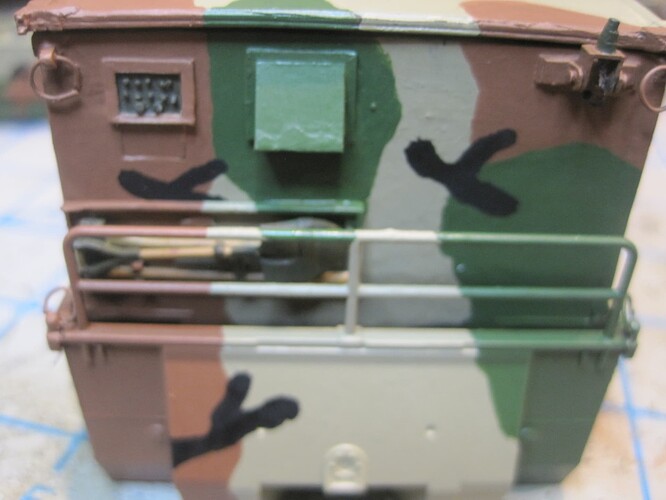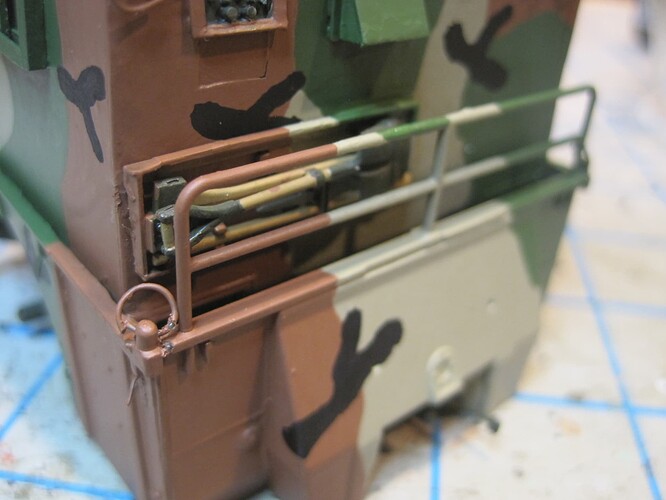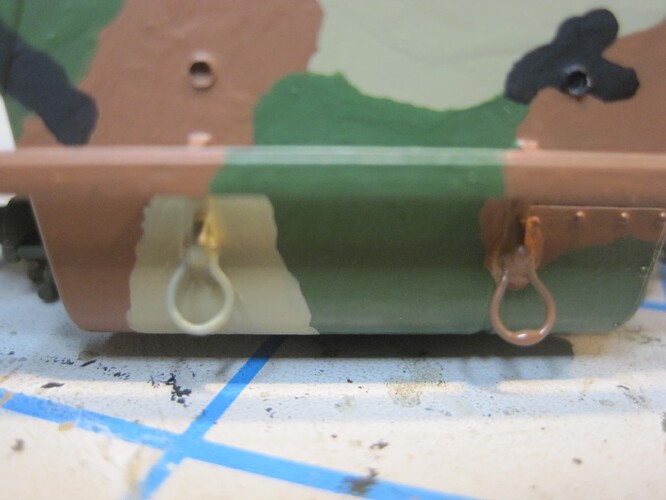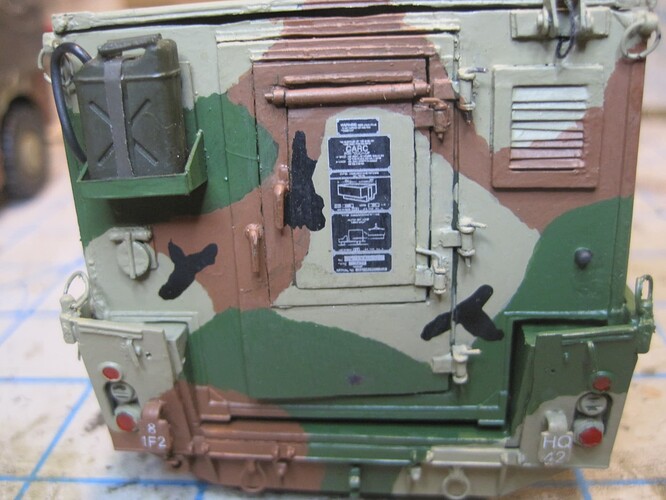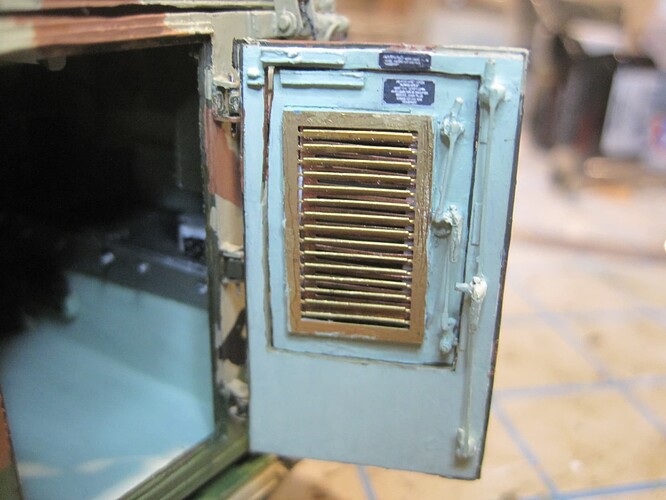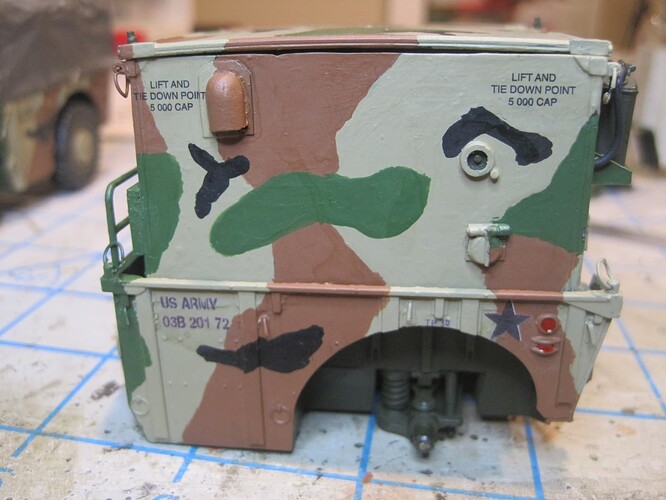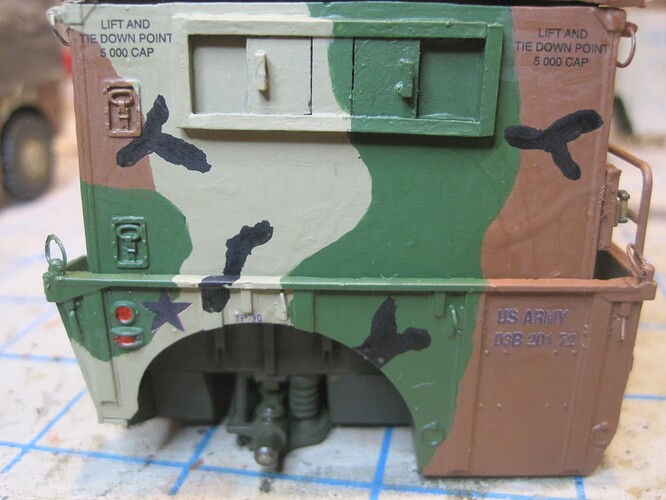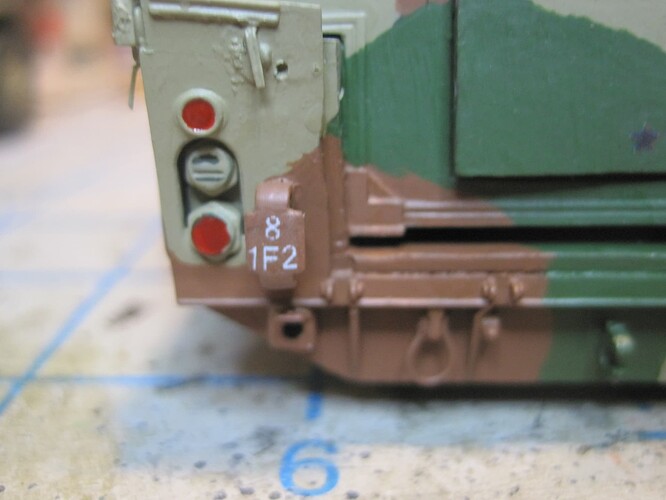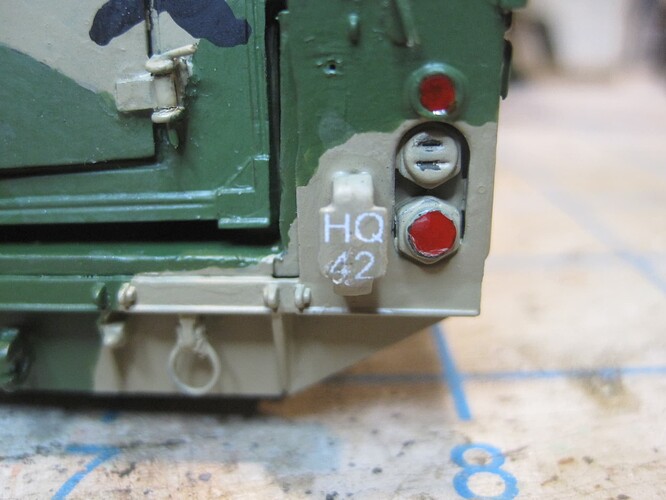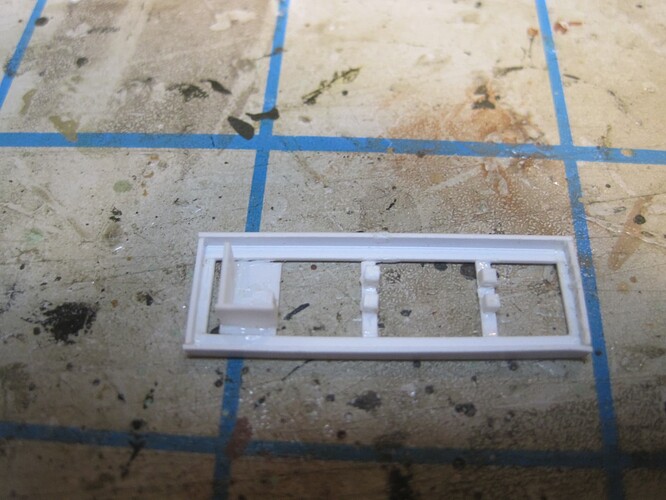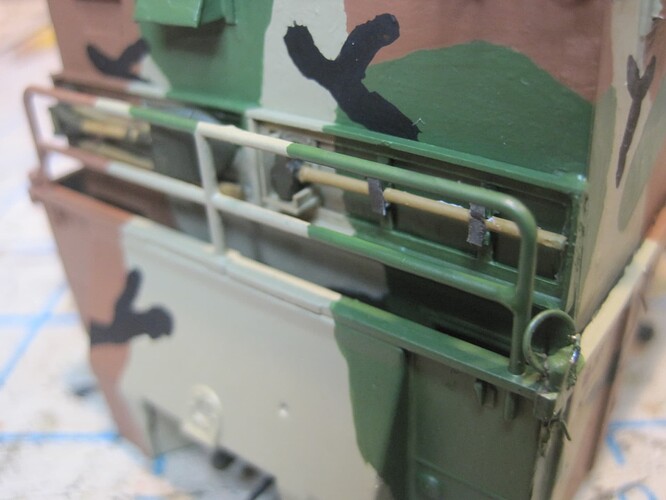When I started the build of the actual vehicle, I said that I hoped that I didn’t have any “assembly” issues. To the extent that that’s defined as existing parts going together smoothly there have been none.
One of the main problems you will run into when for whatever reason you decide to build two of the same vehicles from two different kit manufactures there are going to be differences. These can include features that are included in one kit and not the other, as well as the same items on each kit not being the same either in looks or even in size. And when you’re trying to have the two builds displayed together, there’s a tendency to want to make them look as much alike as possible.
So the result in this case was that I have had to do a lot more scratch building than I had expected. And given that my original Gama Goat build was an all resin kit, and my current one is from Tamiya, I sort of expected that I might have to back build a few things into my earlier build.
Turns out the exact opposite has been the case as there is quite a lot of detail on my previous build (and most of it NOT something that I scratch built for it), that simply wasn’t there in the Tamiya kit.
A few of the features, for example the dash mounted fire extinguisher and of course the engine are understandable. But as I progressed, I kept finding things that Tamiya left off that I found quite surprising.
So here’s where I am as of today. After I revised the engine cover, I started with the cab. First thing I noticed was that the windshield wipers were molded into the windshield. No biggie, but my other kit has separate parts so I did those.
Other items missing from Tamiya which were on my other build and I wanted to include were an end fitting for the cable on the winch, the slave recepticle on the outside cowl, the defroster (definitely something we had in Germany), the air restriction indicator on the dash and a turn signal lever on the steering column, as well as the air box heater switch on the dash over the light switches.
The next item I added were the stiffening beads to the front of the engine cover:
Then the front fender mounted turn signal indicators and the mounts for the tie down mounting points.
Because I’m adding an engine the engine cover hinge needs to be fabricated, along with the supports for the cover:
Next up were the windshield braces which I was really surprised to find were not included in the Tamiya kit.
And finally the braces for and the canvas for the cab. I realize that Tamiya intended this to be for an airborne and Marine unit, but seriously, no cab cover???
Next step is to go ahead and apply the MASSTER scheme to the vehicle without all the details added and without wheels, and then add the engine and radiator and final engine bay items. At that point the cab should be finished and I’ll proceed to the second unit body.


